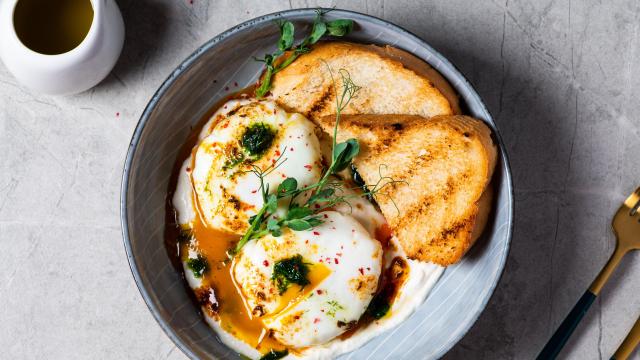Choosing the right oil for the job can be the difference between experiencing a romance of flavours, or the taste of scorched, bitter fats ruining your appetite. Cooking oils are ideal for conducting heat, but finishing oils take the baton when all the roasting, searing, and frying is over. You probably have one in your kitchen already, and using it in the right way can give your meals an immediate upgrade.
Finishing oils differ from cooking oils in two notable categories: smoke point and flavour. Smoke point is the temperature at which the fat will start to degrade, smoke, and scorch, lending a burnt oil smell and flavour to anything you drop into it. Since most foods cook in the ballpark of 180°C, a good cooking oil will have a higher smoke point. Corn oil and vegetable oils smoke at 200°C, making them suitable cooking oils. They hold onto their integrity while cooking and can stand up to the high temperatures required for deep frying. They’re also relatively cheap. Other choices, like walnut oil, will smoke at 320℉ — not ideal for cooking over higher temperatures.
Flavour also plays a role in differentiating cooking and finishing oils. Generally, cooking oils are neutral-flavored, making them more versatile, as they don’t compete with the flavour of the ingredient being cooked. Finishing oils can have a range of flavours, whether naturally (pistachio oil, for example, naturally has a bold, nutty flavour) or from added ingredients like pepper flakes or garlic. As Bon Appetit has noted, any “toasted” nut or seed oil will impart a slightly pungent flavour, making them a good choice for finishing your dishes. Take care not to heat finishing oils at all, or very little. They’re delicate (with a low smoke point) and lose flavour when cooked.
How to choose a finishing oil
Considering both the smoke point and flavour of an oil can help you decide which one to use. Toasted sesame seed oil has a high smoke point, which would, in theory, be great for cooking, but it has such a powerful flavour that it would likely overwhelm your meal if you were preparing something like a delicate fish. Instead, cook that fish in a neutral cooking oil and finish with a touch of toasted sesame seed oil.
Extra virgin olive oil is a household favourite because it can serve both purposes–with a smoke point of 170-190°C, it holds up well while cooking, and imparts various peppery, fruity, and earthy notes when used as a finishing oil. You can cook meatballs with extra virgin olive oil one night and drizzle it over a cold, roasted aubergine salad the next. (For a thorough and concise list of different oils and their applications, peruse this list by Masterclass.)
Since finishing oils hold onto their potent flavours better if they’re kept off direct heat, use them freely on cold dishes, and apply to plated hot dishes just before serving. Drizzle pumpkin seed oil over salads, or add a flavorful swirl to your soup bowl. Try flaxseed oil for its nuttiness on top of hummus or bean dips. Harissa oil is spicy and smart over burrata, especially when finished with flaky salt.
If you’re still only beginning to experiment with finishing oils, turn to the extra virgin already chilling on your countertop. Although it might seem unusual at first, taste it straight — pour a teaspoon or so into a spoon or a little shot glass. Give it a swish in your mouth, and swallow it. You’ll be able to get a better idea of what you’re working with, and what flavours could be highlighted by that oil when used to finish a dish.
Personally, I like this extra virgin olive oil for finishing. Its peppery bite and earthy aroma pair well with salads or over dips. For both cooking and finishing, I keep going back to this one, from California Olive Ranch. It gives noticeable fruit and grassy notes without coming on too strong, and it’s reasonably priced. I’ve even used it in baking with great results. The next time you’re in the supermarket, take some extra time to browse the oil section, check out the smoke points, and explore the different flavour profiles, so you can finish strong.

Leave a Reply
You must be logged in to post a comment.